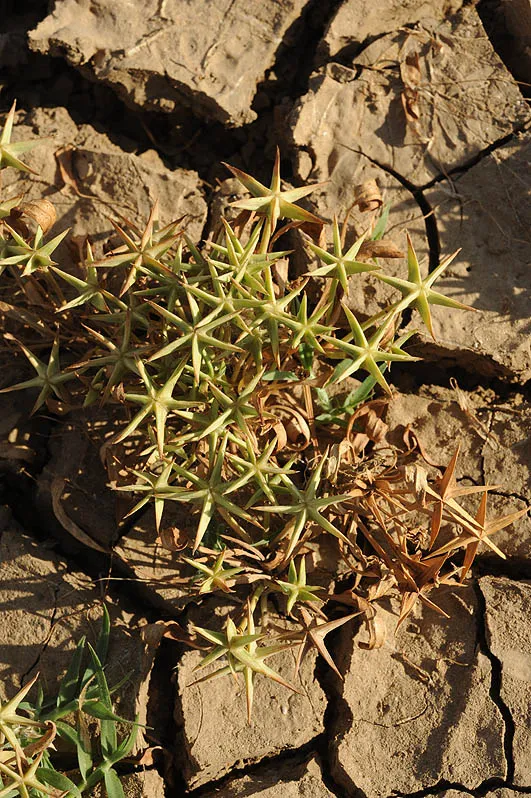African Doum Palm, Gingerbread Tree
Hyphaene thebaica
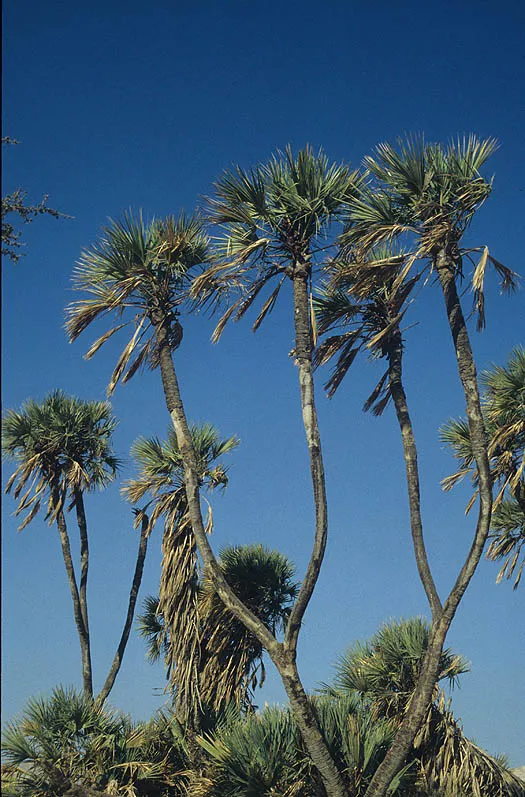
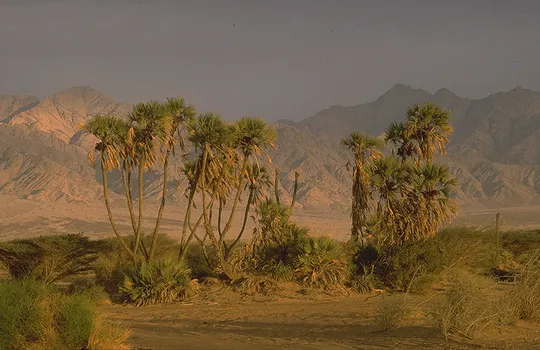
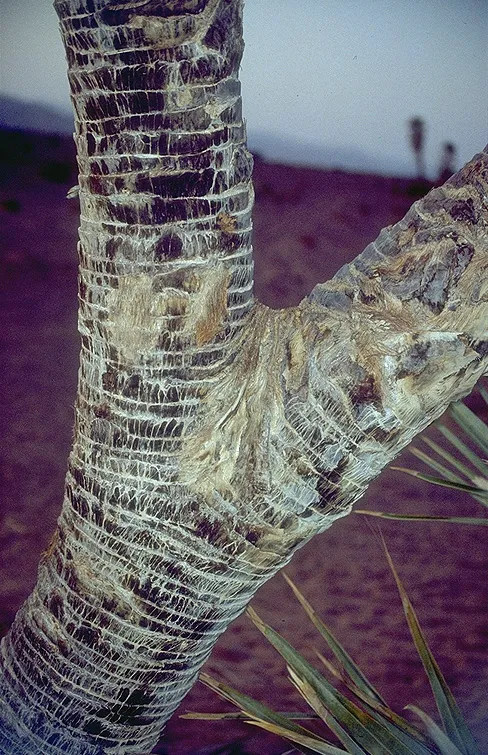
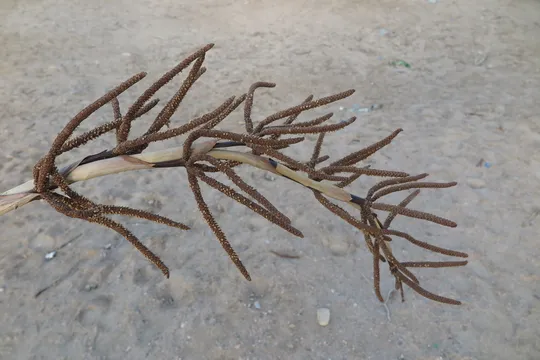
The sweet pulp of the Hyphaene thebaica fruit is
eaten in Upper Egypt, and the fruit is sold in markets there. Its leaves are used to weave baskets, and
ropes are made from the root fibers. The fruits are used in folk medicine, and their
rind for producing a soft drink.
Hyphaene thebaica is very rare in Israel and is found in only two places – at the Evrona salt marsh and near Kibbutz Elot. Both populations grow in the southern Arava at the edge of a salt marsh, where groundwater is close to the surface. The capillary movement of the water causes soil salinization, creating salt crusts on its surface. Another site is located at the edge of Hussein's palace at the western boundary of the city of Aqaba in Jordan. This site is in fact located within the Elat salt marsh, which is intersected by the Israel-Jordan border. In Elat's municipal park, opposite the airport, a Hyphaene tree that was planted by the municipal gardener in the 1950s grows.
Saline oases in hot
areas and salt marshes
where groundwater is close to the surface; also seashores in hot sub-tropical
climates.
The
genus Hyphaene has 32 species, inhabiting dry tropical areas in Africa, Madagascar and the Arabian
Peninsula. Branching of the trunk is a very rare feature in the Arecaceae family (that includes 200 species). Some consider this genus a relict species and the branching trunk as an indication
of that.
The Arava and Chinese populations have been described formerly as a separate species, H. sinaica but most taxonomists do not accept
this.
·
The
decreasing groundwater in the southern Arava due to water pumping threatens
the Hyphaene
thebaica trees growing in the Evrona salt marsh.
·
The
species is found at only two sites, each with only a few trees. The plants
are dioecious and produce viable fruit that germinate, but nevertheless, there
is no renewal from seeds. Today the populations exist only thanks to vegetative
propagation. In the existing demographic situation, the two populations
may become extinct within decades.
·
In
Israel, the fruit remain on the ground and are not eaten. The require help to decompose
and germinate.
·
One site is located in the En Evrona Reserve
(unofficial) and is properly supervised. Plans for establishing an
airport in the area could lead to the extinction of the
population. The second site is at the edge of the Aqaba Border
Crossing and is in immediate danger.
Hyphaene thebaica should be propagated from seeds to increase the number of trees at both sites. Urgent action must be taken to enclose and preserve the Aqaba border crossing population. The annual fruit crop of the trees should be monitored and an accurate count of the number of males and females made.
Hyphaene thebaica grows in northeast Africa: Upper Egypt, Ethiopia,
Djibouti, Horn of
Africa, and Sudan (Boulos, 2005). The
populations that grow in East Africa, South Africa,
Senegal, Angola and Chad were separated into another
species. In the Middle East it grows only in Israel, southern Jordan (Aqaba) and
the Arabian Peninsula, in Yemen and in the Asir region on the
shores of the Red Sea south of Mecca. It does not continue eastwards
to the Persian Gulf and to Rajasthan as do many other Sudano-Decanian
plants. In Sinai it grows only on the Gulf of Elat beaches at
the outlet of Wadi Taba, in Bir Sweir and at the
outlet of Wadi Watir.
Hyphaene thebaica is a branched
palm, with palmate leaves, unique among the world’s palm trees in its split trunk. It is a Sudanese northern peripheral species, very rare in Israel, found in the southern Arava near Elat in only two populations.
The number of individuals (tree clumps) does not exceed 4. It is one of the rarest plants in Israel.
כהן, ע. ושמידע, א. צמחים נדירים בישראל – דום מצרי. טבע וארץ לא/1: 40-41.
Purtado,A.1970. Asian Species of Hyphaene. Gardens' Bull. Singapore,25: 299-309.
Current Occupancy Map
| 1000 squre meter pixel | 5000 squre meter pixel | 10000 squre meter pixel | |
|---|---|---|---|
| number of observations | 0 | 0 | 0 |
| in total pixels | 0 | 0 | 0 |
| Family | Arecaceae |
| Classification | On the endangered species list |
| Ecosystem | Desert |
| Chorotype | Sudano - Decanian |
| Conservation Site | Evrona Nature Reserve |
| Rarity |
1
5
6
|
|---|---|
| Vulnerability |
0
3
4
|
| Attractiveness |
0
1
4
|
| Endemism |
0
0
4
|
| Red number |
1
5.3
10
|
| Peripherality | S |
| IUCN category | DD EW EX LC CR EN VU NT |
| Threat Definition according to the red book | Critically endangered |
 Based on:
Based on:



